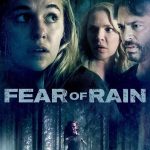The Texas Chainsaw Massacre (1974)

Suggested videos for you: [Movie Review] Fast X (2023)
Suggested videos for you: [ Movie Review ] Legend of Retired Cop Against Drug Empire || The Last Stand.
Suggested videos for you: [ Movie Review ] Mysterious Fog Wipes Out All Life on the Cursed Island || The Fog
Suggested videos for you: [ Movie Review ] Resurrected Mummy: The Battle to Reclaim a Lover’s Soul
The Texas Chainsaw Massacre (1974), directed by Tobe Hooper, is a seminal film in the horror genre, known for its raw intensity, disturbing imagery, and groundbreaking approach to the slasher film formula. It remains one of the most influential and terrifying films in horror history, despite its relatively low budget and lack of graphic on-screen violence compared to modern standards.
Story and Characters
The film follows a group of five friends—Sally (Marilyn Burns), her brother Franklin (Paul A. Partain), and their companions—who travel to rural Texas to visit an old family homestead. Along the way, they encounter a grotesque and cannibalistic family led by Leatherface (Gunnar Hansen), a hulking figure who wears a mask made of human skin and wields a chainsaw as his primary weapon. One by one, the group is hunted down in brutal, terrifying fashion.
The plot is simple, but its straightforwardness contributes to the film’s effectiveness. The sense of dread and tension builds from the moment the characters arrive in rural Texas, and the film wastes little time in diving into chaos once they encounter Leatherface and his deranged family. Sally, the final girl, emerges as a strong protagonist, with her harrowing endurance in the film’s final act being one of the most memorable sequences in horror cinema.
Atmosphere and Tone
One of the most significant aspects of The Texas Chainsaw Massacre is its relentless, oppressive atmosphere. The film’s grimy, documentary-like style gives it a raw, almost real-world quality that makes it feel disturbingly authentic. The scorching Texas heat, combined with the decaying rural setting, creates a sense of suffocating discomfort that adds to the terror.
Despite its reputation, the film is relatively restrained in terms of graphic violence. Much of the horror comes from suggestion, atmosphere, and psychological unease rather than explicit gore. The quick, brutal attacks, the unnerving use of sound (including the chainsaw itself), and the eerie set design of the family’s house—filled with bones, furniture made from human remains, and grotesque decorations—all contribute to the visceral impact of the movie.
Leatherface and the Villains
Leatherface, played by Gunnar Hansen, is one of the most iconic horror villains ever created. His unpredictable and terrifying demeanor—ranging from a childlike innocence to explosive violence—sets him apart from other slasher antagonists. The skin mask he wears and his erratic, animalistic movements make him a deeply unsettling figure. Though Leatherface is the face of the franchise, the entire family (often referred to as the Sawyer family) plays a role in the horror, each member adding a layer of derangement and grotesque abnormality.
The family embodies a twisted version of the American rural working class, driven to monstrous behavior by isolation, economic despair, and madness. Their interactions are equally horrifying and bizarre, giving the film an almost nightmarish, surreal quality.
Themes
At its core, The Texas Chainsaw Massacre explores themes of isolation, societal breakdown, and the fragility of human life. The film is often interpreted as a commentary on the 1970s political climate in America, particularly in the wake of the Vietnam War and the cultural shifts happening at the time. The terror in the film is driven not by supernatural forces, but by ordinary humans pushed to the limits of sanity, which makes the horror feel more immediate and real.
The idea of cannibalism and the desecration of human bodies also taps into deep-seated fears about the breakdown of civilization and morality. The film’s grim portrayal of rural life in Texas—where there’s no escape from the horrors lurking in the backwoods—further underscores its themes of isolation and vulnerability.
Legacy and Impact
The Texas Chainsaw Massacre is widely regarded as a landmark in horror cinema. It helped to define the slasher genre, influencing later films like Halloween (1978) and Friday the 13th (1980). Its realistic, documentary-like style paved the way for future horror films that aimed for a more grounded and gritty approach, as opposed to the more fantastical or supernatural elements prevalent in earlier horror films.
Though it was controversial at the time of its release, facing bans in several countries due to its disturbing content, the film has since been reassessed as a classic and a masterpiece of minimalist horror. Its influence can be seen in countless horror films that followed, and Leatherface remains one of the most recognizable figures in the genre.
Final Thoughts
The Texas Chainsaw Massacre is a raw, visceral experience that continues to haunt audiences to this day. Its unrelenting atmosphere, groundbreaking portrayal of horror, and the iconic character of Leatherface have earned it a place in the pantheon of classic horror films. It may not rely on explicit gore, but its power lies in its ability to tap into primal fears of survival, madness, and the terrifying unknown lurking just beneath the surface of society.
For those seeking a horror film that pushes the boundaries of tension and terror, The Texas Chainsaw Massacre remains a must-watch. Its influence on the genre is undeniable, and it continues to stand as a testament to how effective horror can be when grounded in reality and atmosphere.










